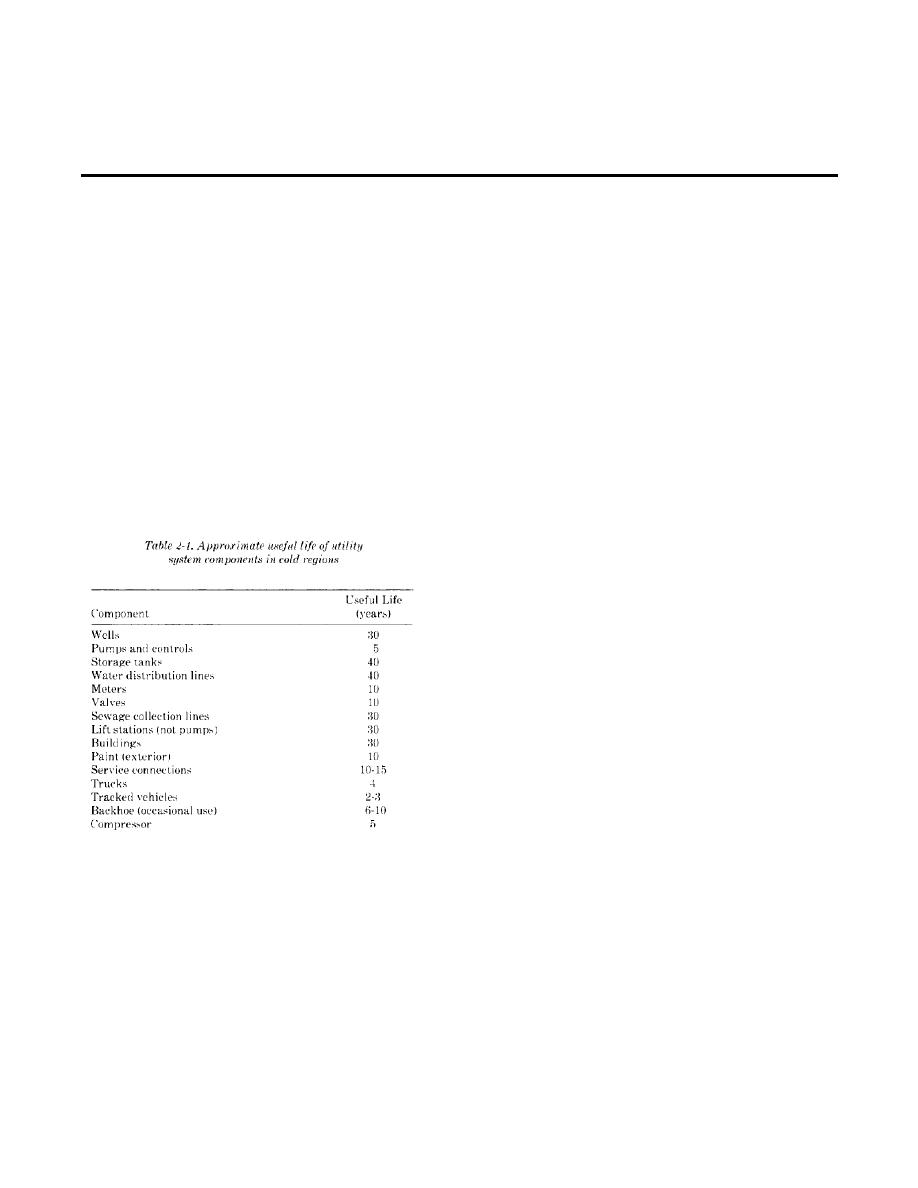
TM 5-852-5/AFR 88-19, Volume 5
CHAPTER 2
PLANNING UTILITY SYSTEMS
2-1. General considerations.
first of September. This means that non-modular
construction materials must be shipped a year in
In the Arctic and Subarctic, utility systems are
advance and stockpiled for the next construction
usually the most costly component in construction
season. The stick-built approach, where all
of military installations. The layout of a new installa-
fabrication is done on site, and the prefabrication
tion is often controlled by the type of distribution
approach, where some components are
and collection systems selected for the utilities net-
preassembled at the point of manufacture, are more
work. As a result, planning for a new installation in
common at interior locations where transport is
the cold regions must include consideration of utili-
limited to air or small rivers. Prefabrication of
ties at a very early stage to ensure overall cost
insulating piping units has been shown to be cost
effectiveness.
effective for remote locations. The normal
a. Useful life. The useful life for utility systems
construction season varies from two or three
and equipment in cold regions is shorter than for the
months along Alaska's Arctic Coast to six or eight
same units operated in more temperate climates.
months in southern areas of Alaska.
Items of equipment that must operate throughout
the winter are particularly critical. Trucks used for
2-2. Installation layout.
water delivery or waste collection are examples.
Table 2-1 presents typical useful lives for some
The arrangement of buildings and other facilities at
utilities components in the Arctic and Subarctic.
military installations must be as compact as possible
to reduce utility construction and operation and
maintenance (O&M) costs. Unserviced areas and
large open spaces such as storage yards, parks and
playgrounds must be located on the outskirts of the
installation. If possible, buildings must be located so
as not to "shade" smaller structures from either sun
or wind. Improper location of large buildings results
in excessive snow drifting and burial of smaller
structures. Doors and entry-ways to buildings must
not be on the windward or leeward sides if possible
to avoid drift interference. Orientation of the
structure with the long axis parallel to the prevailing
wind direction will reduce drifting problems. Roads
and walkways will be constructed slightly above the
general ground surface to avoid drifting problems,
and construction in cut sections will be avoided if
possible. Access points (manholes, service boxes,
etc.) for utility system maintenance must be located
so that entry can be guaranteed during the winter
b. Construction methods. The three basic
months.
a. Utility networks. The truck delivery of water
construction techniques used are modular, stick
built, and prefabricated. The method selected must
and collection of wastes is still used at many civilian
depend on site conditions and transportation
communities in Alaska, Canada and Greenland.
facilities available. Modular construction, where the
However, at most U.S. military installations in the
entire facility or a major component is preassembled
Arctic and Subarctic it will be more cost effective to
and shipped via barge to the point of use, has been
provide piped systems for water supply and waste-
widely used at oil field developments on the
water collection. The capital costs for piped systems
northern coast of Alaska. It is advantageous in these
are higher than for the truck delivery but operation
locations since large barges can be used, the
and maintenance costs are significantly lower. The
construction season is short, and labor is very
critical planning decisions for utility networks are
expensive. Barges can usually begin to arrive in
(1) whether the pipes should be above or below
Barrow, Alaska, and the Eastern Arctic around the
ground, and (2) whether the pipes should be
2-1



 Previous Page
Previous Page
